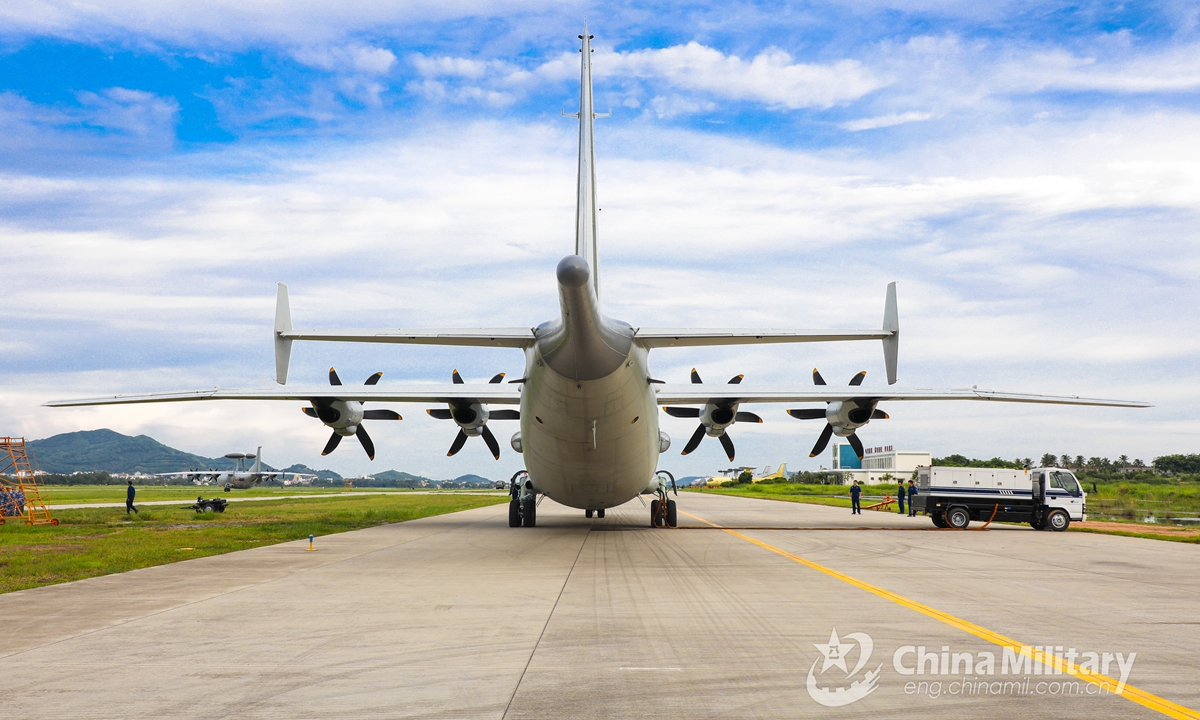PLA warplanes conduct sorties in Taiwan Straits on 25 days in October
By Liu Xuanzun Source: Global Times Published: 2020/11/1 21:58:40

Airmen are boarding on a Y-8 aircraft for anti-submarine warfare patrol mission during a round-the-clock flight training exercise on August 19, 2020. The aircraft is assigned to a naval aviation regiment under the PLA Southern Theater Command.Photo:China Military
Amid recent US arms sales to the island of Taiwan, the Chinese People's Liberation Army (PLA) reportedly sent warplanes to the Taiwan Straits on at least 25 days out of the total of 31 days in October, setting a new record for frequency this year, and leading Chinese mainland military analysts to say on Sunday that the PLA's patrol and drill operations in the region have become completely routine and the PLA is in full grasp of the situation.
Citing data released by military observers on the island of Taiwan, Taipei-based newspaper the Liberty Times reported on Sunday that the PLA conducted sorties in the island's self-proclaimed southwestern "air defense identification zone" on at least 25 days in October, forcing the island's air force to use radio broadcasts to attempt to warn the PLA warplanes more than 84 times.
Both figures were the highest so far in 2020, the newspaper said. This also means that PLA warplanes were flying in the Taiwan Straits for more than 80 percent of the days in October, although the Chinese mainland enjoyed an extended eight-day National Day holiday together with the Mid-Autumn Festival at the start of the month.
The momentum does not seem to have stopped after October, as a PLA aircraft again approached Taiwan on Sunday morning, according to the Liberty Times.
This shows that the Chinese mainland's military forces have made patrols in the Taiwan Straits routine and normal, and they have achieved complete monitoring of any anomaly on the island or from foreign forces that might occur, Wei Dongxu, a Beijing-based military expert, told the Global Times on Sunday.
According to statements released by Taiwan's defense authority during the past month, the PLA warplanes that operated near the island mainly included the Y-8 anti-submarine warfare aircraft, Y-8 reconnaissance aircraft, and Y-8 and Y-9 electronic warfare aircraft.
These special-mission aircraft based on the Y-8 aircraft platform can monitor surface and underwater vessel movements by both Taiwan and the US, gather electronic signals and intelligence, and jam opponents' electronic devices, experts said.
The PLA operations came amid US' latest weapons sales to the island, which Senior Colonel Tan Kefei, a spokesperson for China's Ministry of National Defense, said on October 22 seriously violates the one-China principle and the three China-US Joint Communiques, and severely interferes in China's internal affairs and undermines China's sovereignty and security interests.
The mainland will adjust its activities in accordance with the situation. If Taiwan or foreign countries like the US conduct further military provocations, the PLA could demonstrate more of its abilities, including anti-access and seizure of aerial superiority and sea control, Wei predicted.
Posted in: MILITARY